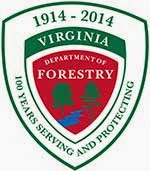
The Nature Conservancy has recently discovered a 20-30 acre infestation of wavy-leaved basket grass (Oplismenus hirtellus ssp. undulatifolius) in mature forest at the Fraser Preserve along the Potomac River in western Fairfax Co.
This "new", though well-established, population is addition to a 80-acre site in the Shenandoah National Park. This threat has similarities and differences to Japanese stiltgrass (Microstegium vimineum). It is similar in its aggressiveness and shade tolerance. Unlike Microstegium, this species can invade mature, mesic forests without any soil disturbance. Microstegium usually becomes established in such settings by following wood roads and seeding in around downfalls. Wavy-leaved basket grass is easily spread by sticky seeds which attach to boots and pants legs.
Wavy-leaved basket grass, native to Europe and Asia, was first found as an invasive in 1999 in Maryland. More information can on wavy-leaved basket grass be found at the Maryland Department of Natural Resources website
Monitoring and proper notification is essential for management of this species. If you find an infestation please contact Gary Fleming at the Virginia Department of Conservation and Recreation, Division of Natural Heritage



